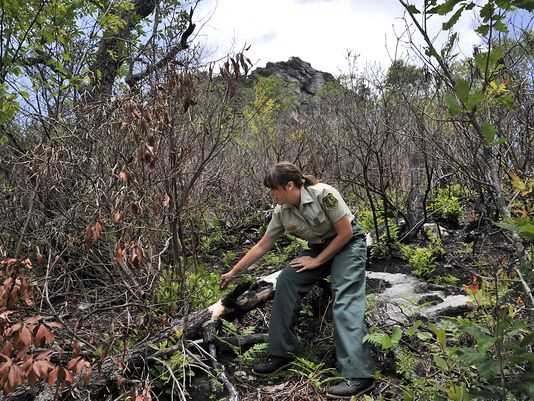Restoring oak forests is a priority area for the Grandfather Restoration Project and the National Forests in North Carolina wildlife management program. An article recently published in the Journal of Forestry summarizes findings of 40 years of research on prescribed fire in upland oak forests in the Eastern United States.
“A chronological review of the scientific literature pertaining to fire– oak research shows how the science has developed through time and has produced several management
guidelines for the upland oak forests in the eastern United States. Prescribed fire can be used in mature stands to begin the regeneration process by reducing dense understory shade and preparing a seedbed for new oak seedlings. However, care must be exercised so as to not destroy a recent acorn crop or kill small oak seedlings. Prescribed fire can also be used near the end of the regeneration process to release oak reproduction that is being outcompeted by taller, faster-growing mesophytic hardwood reproduction… Finally, fire can be used long term to recreate open oak woodlands similar to those that used to exist in many parts of the eastern United States. In all scenarios, foresters must also be mindful that prescribed burning stimulates germination of the seed bank, encourages establishment of exotic and native plant species, and attracts deer. Therefore, landowners and managers of upland oak ecosystems will need to carefully use prescribed fire so as to accentuate its benefits while avoiding its negative effects.”
Because of the lack of early-successional forests on the Grandfather RD that provide herbaceous growth for wildlife, animal species in the area are highly dependent on hard mast trees such as oaks and hickories. Oaks provide forage for a variety of game and non-game wildlife including deer, bears, squirrels, turkey, red-headed woodpeckers, and Appalachian wood rats. This article will help to inform managers on the Grandfather RD on the best techniques for reintroducing fire to oak ecosystems in order to improve wildlife habitat across the landscape.
Access the article on the Journal of Forestry website here: Development of Prescribed Fire as a Silvicultural Tool for the Upland Oak Forests of the Eastern United States




